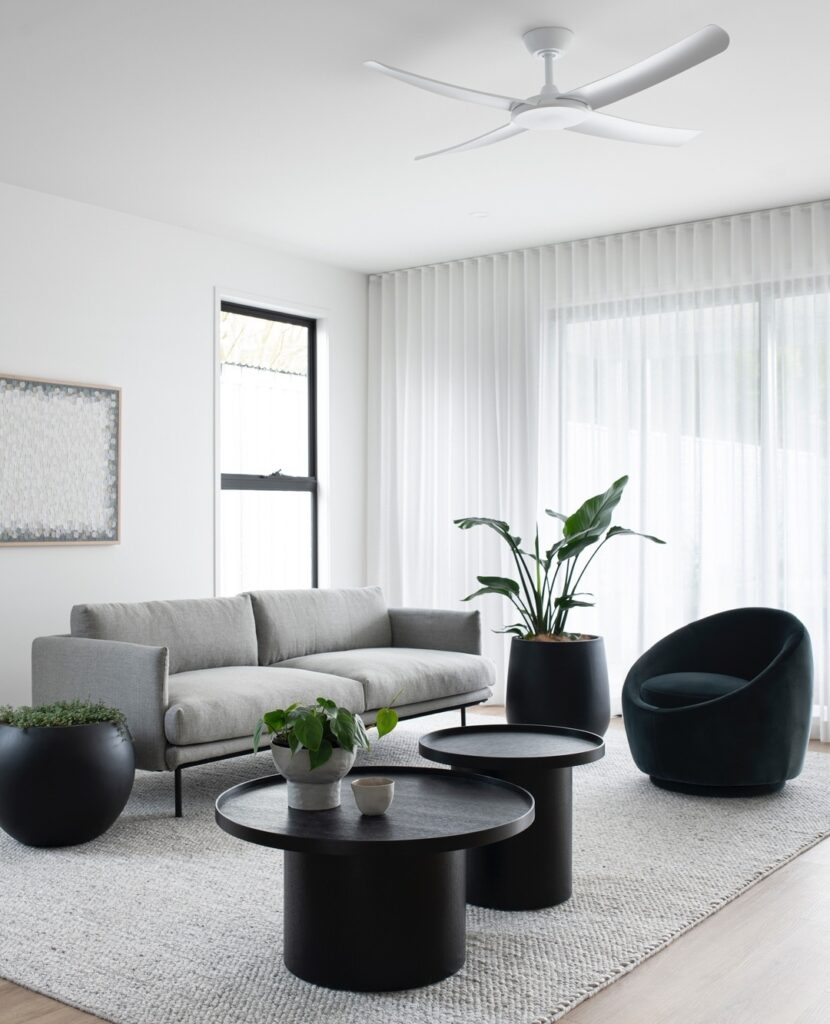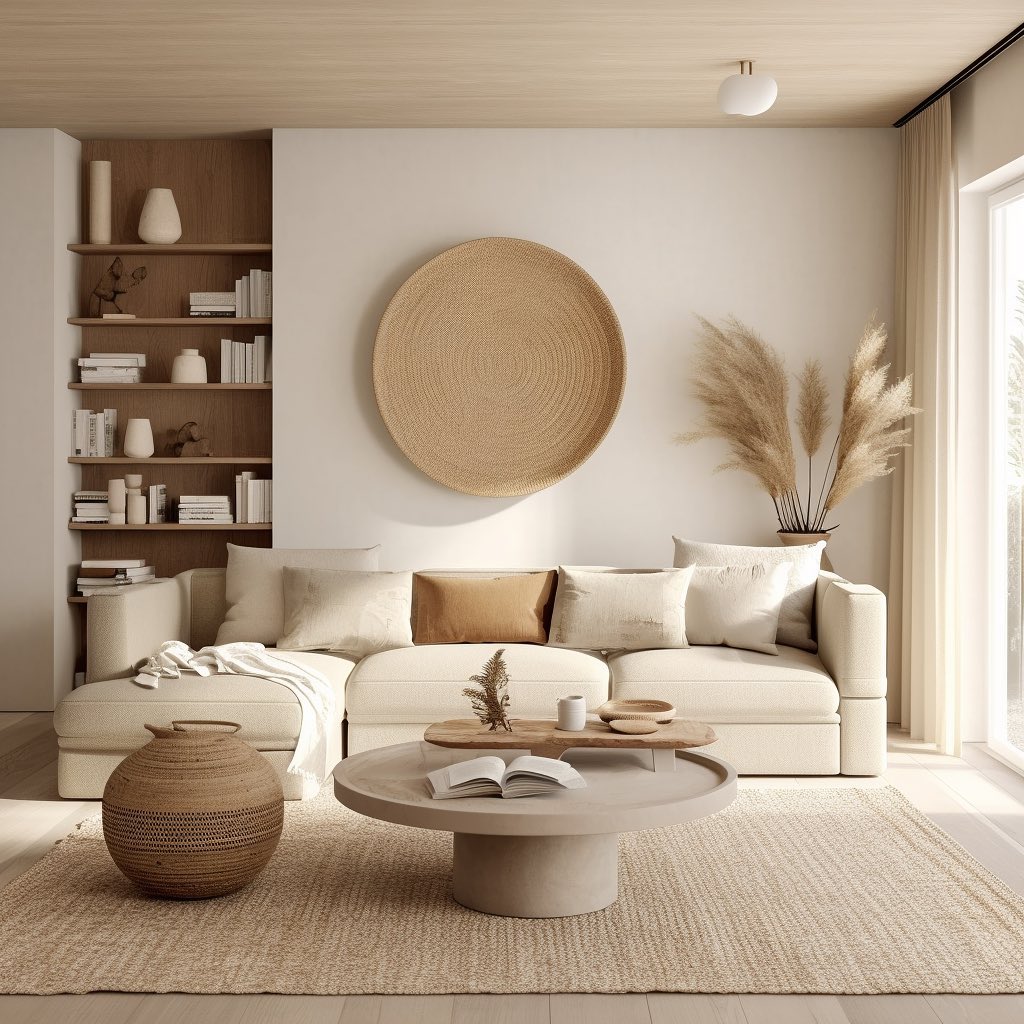
Introduction
Welcome to our comprehensive guide on creating a minimalist living room. In this article, we will explore the concept of minimalist design, its benefits, and how to implement it in your living room. Whether you’re a minimalist enthusiast or someone seeking a calm and clutter-free space, this guide will provide you with valuable insights and practical tips to achieve a serene and stylish living room. So, let’s dive in and discover the beauty of minimalist living!
Minimalist Living Room: The Essence of Simplicity
A minimalist living room is a space that celebrates simplicity, functionality, and a clutter-free environment. It embraces clean lines, neutral color palettes, and a curated selection of essential furnishings. The goal is to create a peaceful and harmonious atmosphere that promotes relaxation, mindfulness, and a sense of balance. By eliminating excess and focusing on the essentials, a minimalist living room allows you to enjoy a serene and uncluttered space that nurtures your well-being.
Benefits of Minimalist Living Rooms
- Promotes Relaxation: A minimalist living room creates a calming environment that helps reduce stress and promotes relaxation. The absence of visual clutter allows your mind to unwind and find peace.
- Enhances Focus: With fewer distractions, a minimalist living room allows you to focus on the present moment, be it reading a book, enjoying a cup of tea, or engaging in meaningful conversations with loved ones.
- Easy to Maintain: Minimalist spaces are easier to clean and maintain since there are fewer objects to dust or organize. This frees up time for activities you truly enjoy.
- Maximizes Space: By eliminating unnecessary furniture and decorative items, a minimalist living room optimizes space utilization, making the room appear more spacious and inviting.
- Encourages Mindful Consumption: Adopting a minimalist lifestyle encourages conscious decision-making when it comes to purchasing new items. You become more aware of the things you truly need, reducing unnecessary expenses and waste.
- Promotes Well-being: A minimalist living room can have a positive impact on your mental and emotional well-being. It creates a sense of tranquility and allows you to focus on what truly matters, fostering a greater sense of contentment.
How to Create a Minimalist Living Room
1. Assess Your Space and Declutter
Before embarking on your minimalist journey, take a moment to assess your living room and declutter. Remove items that no longer serve a purpose or bring you joy. Keep only the essentials and consider donating or selling the rest.
2. Choose a Neutral Color Palette
Opt for a neutral color palette, such as whites, grays, and earth tones, to create a calming and cohesive atmosphere. These colors provide a timeless backdrop that allows your furniture and decor to stand out.
3. Invest in Quality Furniture
Choose furniture pieces that are functional, well-crafted, and built to last. Minimalist design focuses on quality rather than quantity. Select a comfortable sofa, a sleek coffee table, and a minimalist entertainment center that fulfills your needs without overpowering the space.
4. Embrace Simple and Clean Lines
Minimalist design favors clean lines and simplicity. Select furniture and decor with sleek profiles and minimal ornamentation. Avoid excessive patterns or intricate details that can create visual clutter.
5. Keep Surfaces Clutter-Free
Maintain clean and clutter-free surfaces by organizing and storing items out of sight. Use stylish storage solutions like baskets, bins, or minimalist shelves to keep belongings neatly tucked away.
6. Let in Natural Light
Maximize natural light in your living room to create an airy and spacious feel. Remove heavy curtains or opt for sheer fabrics that allow light to filter through. If privacy is a concern, consider installing blinds or translucent window films.
7. Incorporate Minimalist Decor
Choose a few carefully curated decor items that align with the minimalist aesthetic. Select statement pieces that reflect your personality and enhance the overall ambiance. Examples include a large abstract painting, a sculptural vase, or a well-placed indoor plant.
8. Create Functional Zones
Designate different areas within your living room for specific activities. For example, create a reading nook with a comfortable chair and a floor lamp, or set up a minimalist workspace with a sleek desk and a minimalist chair. This division of space adds functionality and purpose to your living room.
9. Optimize Storage Solutions
Invest in furniture with built-in storage options, such as ottomans with hidden compartments or media consoles with drawers. Utilize vertical space by installing floating shelves or wall-mounted cabinets. These storage solutions keep your belongings organized and out of sight.
10. Minimize Electronic Clutter
Keep electronic devices and cables out of sight as much as possible. Conceal cords behind furniture or use cable management systems to create a clean and streamlined look. Consider using a minimalist TV stand or wall-mounting your television to free up floor space.
11. Introduce Natural Elements
Incorporate natural elements into your minimalist living room to add warmth and texture. Use materials like wood, stone, or jute to create a connection with nature. Consider adding indoor plants to bring life and freshness to the space.
12. Simplify Window Treatments
Keep window treatments simple and unobtrusive. Opt for sheer curtains, bamboo blinds, or roller shades that can easily be rolled up or pulled back to allow natural light to flood the room. Avoid heavy drapes or complicated curtain styles that add visual clutter.
13. Choose Thoughtful Lighting
Lighting plays a crucial role in creating a minimalist atmosphere. Aim for a combination of natural light during the day and layered lighting options for the evening. Use recessed lighting, pendant lights, or minimalist floor lamps strategically to create a warm and inviting ambiance.
14. Select Minimalist Artwork
Choose artwork that complements the minimalist aesthetic. Opt for pieces with clean lines, simple compositions, and limited color palettes. Large-scale abstract paintings, black and white photography, or minimalist sculptures can make a striking statement in a minimalist living room.
15. Practice Regular Maintenance
To maintain a minimalist living room, establish regular cleaning and decluttering routines. Dedicate a few minutes each day to tidy up and put things back in their designated places. Periodically reassess your belongings to ensure they align with your minimalist goals.
16. Incorporate Mindfulness Practices
A minimalist living room can serve as a sanctuary for mindfulness practices. Create a dedicated space for meditation or yoga, using minimal props and soothing colors. Practice mindful activities such as journaling or deep breathing in your minimalist oasis.
17. Engage All Senses
Consider the sensory experience in your minimalist living room. Use scented candles or essential oil diffusers to introduce calming fragrances. Play soft and soothing music to create a serene ambiance. Choose textures and fabrics that are pleasing to touch and promote relaxation.
18. Customize to Your Lifestyle
While there are general guidelines for creating a minimalist living room, it’s essential to adapt them to your unique lifestyle and preferences. Personalize the space with meaningful items that bring you joy and reflect your personality. Strike a balance between minimalism and functionality that works for you.
19. Seek Design Inspiration
Browse online platforms like Pinterest and interior design websites for inspiration. Explore minimalist living room ideas, color schemes, and furniture arrangements. Take note of elements that resonate with you and incorporate them into your own space.
20. Hire a Professional Interior Designer
If you feel overwhelmed or need expert guidance, consider hiring a professional interior designer. They can help you translate your vision into a functional and aesthetically pleasing minimalist living room. Collaborate with them to create a space that aligns with your goals and preferences.

FAQs About Minimalist Living Rooms
1. Can I have a minimalist living room if I have children or pets?
Absolutely! Minimalist living rooms can be family-friendly. Focus on durable and easy-to-clean materials for furniture and create designated storage areas for toys and pet supplies. Involve your children in the decluttering process and teach them the value of simplicity.
2. What if I love colors? Can I incorporate them into a minimalist living room?
While minimalist design typically embraces neutral colors, you can add pops of color as accents. Choose one or two hues that complement your color palette and incorporate them through cushions, artwork, or decorative objects.
3. How do I maintain a minimalist living room?
Regularly declutter and re-evaluate your belongings to ensure they align with your minimalist goals. Adopt a one-in, one-out policy when bringing new items into the space. Create daily habits of tidying up and always return items to their designated places.
4. Can a minimalist living room still feel cozy?
Yes! A minimalist living room can be both minimalist and cozy. Incorporate soft textures, such as plush rugs or cozy blankets, to add warmth and comfort. Layer your furniture with cushions and incorporate warm lighting to create a cozy ambiance.
5. What if I have a small living room space?
Minimalist design is perfect for small living rooms as it maximizes space and creates an illusion of openness. Choose furniture with clean lines and multifunctional features. Utilize wall space for storage and keep the room clutter-free to create a sense of expansiveness.
6. Where can I find minimalist design inspiration?
Online platforms such as Pinterest and interior design websites offer a wealth of minimalist design inspiration. Additionally, visiting furniture stores or hiring a professional interior designer can provide you with valuable guidance and ideas.
Conclusion
Embracing a minimalist living room allows you to create a serene and harmonious space that nurtures your well-being. By eliminating clutter and focusing on the essentials, you can enjoy a calming environment that promotes relaxation and mindful living. Remember, minimalist design is a journey, and it’s about finding what works best for you. So start decluttering, explore design inspirations, and create a minimalist living room that truly reflects your style and values.
